ScreenFonts: The King's Speech, Black Swan, Burlesque, The Tourist, The Fighter, True Grit
This is getting slightly ridiculous. I don't know at what point this series started to slide so badly, but can you imagine I still have the movie posters from the end of last year to discuss? Most of you know how on those rare occasions one specific project can spin horribly out of control once you miss the deadline and other assignments need to be dealt with. As I don't want my preparatory work to go to waste, these older posters will still be reviewed in this episode. Then I'll simply drop a couple of months and start fresh next episode. In the grander scheme of things I guess this is not too dramatic. Or is it…?
What a perfect way to start this episode. The movie poster for For Colored Girls is breathtakingly beautiful. An unfinished portrait of an African-American woman is gorgeously rendered in warm and rich watercolours on a pristine white background. It has phenomenal impact, both visually and emotionally. By focusing on her eyes and nose, and barely hinting at the rest of the woman's features, the artist opens a window to her soul, establishing her identity as a "coloured girl" along the way. The streaks created by drops of water colour running down the poster add a touch of sadness to the image. They subtly hint at the subject matter – twenty women each portray one character represented in a collection of as many poems, revealing different issues that impact women in general, and women of colour in particular.
As befits any "serious movie" these days, all type is set in Hoefler & Frere-Jones' Gotham. It is quite sad this type family is starting to suffer the backlash of its popularity. Inevitably any typeface that starts to pervade the visual culture so strongly is bound to attract the mindless mass of haters that simply can't cope with its ubiquity. Whereas some of these overused type designs may deserve the scorn they are subjected to, personally I am persuaded Gotham certainly doesn't.
The equally beautiful alternate version of the movie poster sits somewhere between contemporary stained glass creations and the work of Piet Mondrian. Here the concept of "colored girls" is visualised by placing black-and-white portraits on flat colours, with Janet Jackson's mouth in full colour acting as an eye-catcher. Again the simple white background is perfect for the crisp black type, and brings balance to the composition.
Another design that uses multiple photographs – though in a much simpler arrangement – is the movie poster for Red Hill. Each portrait is cropped in an interesting way, and the four images work well together. Yet their contemporary treatment somewhat clashes with the aged background and slightly worn type – Aachen – making them a mismatch.
Having seen Ryan Kwanten in action as Jason Stackhouse in the first season of True Blood, I wasn't really surprised by the conflagration in his pantaloons on this alternate poster. Oh boy, that guy is a naughty bunny in human form! The faceted square sans in this design is Blender.
What I like about the almost two years ago I picked up on the glaring similarities between the posters for The Taking of Pelham 123, and Déjà Vu which was released in 2006. The title of the latter movie meant I didn't even have to come up with a joke myself.
Yet what I had failed to notice is that both movies were by the same director: Tony Scott. And now IMPAwards user Dr. Zoid points out that Tony Scott's latest film Unstoppable has a poster that uses the same graphic devices again. Furthermore the poster for an earlier Tony Scott film, 2001's Spy Game, also looks rather… familiar. Yup, that's four of them. I guess it's way past time he considers this particular bag of tricks to be exhausted.
These character posters for Morning Glory strike me as a concept botched up in the execution. Up to a certain point I can see where this was meant to be going. Century Schoolbook could pass for a typical news face, referring to the "struggling morning show program with warring co-hosts" storyline. The overlaid red, orange, and yellow type was supposed to contrast with the black and white pictures of the three stars, whose eyes peek between the lines. Unfortunately it doesn't work at all – the letters don't have enough "body" to detach themselves from the underlying images, and making them semi-transparent doesn't really help. Especially cringe-worthy are the spaced-out names of the actors.
The main poster suffers from the same ailments, yet to add insult to injury now the actors' names were squooshed™. But don't worry, just look at the bottom of the artwork for your unhealthy dose of letterspaced lowercase. As a side note, it grates me how they always manage to mismatch the names at the top with the actors on the poster. I understand it's all about contractual stipulations: the most important actor comes first when reading left to right, and usually is in the middle of the poster. Still it looks extremely daft.
No, if you plan on overlaying type on a movie poster, you're better off picking an image and a typeface that lend themselves to this kind of composition. The movie poster for Tiny Furniture for example does it far more thoughtfully. By extending the off-white floor on the foreground and letting it blend seamlessly into solid colour, the designer created a perfect canvas for the type. The letters have more than enough body to be perfectly readable.
Interestingly the tagline is set in the same typeface – Nobel Condensed – at the same large size as the movie title, and takes up five times as much poster real estate. The movie title is only identifiable as such by having the same watermelon green colour as the line below stating "A Film by Lena Dunham", which distinguishes it from the fully saturated orange colour of the tagline. A quote from a review – in the same watermelon green as the movie title – fits snugly in the ragged right setting of the tagline. Both colours complement the bright yellow of the tiny furniture very well. A rather unusual solution that turns out to be remarkably efficient.
The blue glow wherever possible. And humans fighting against all odds, so have two lone figures approaching the towering alien vessels. The way all these elements are brought together is rather clunky. Plus it's a shame you can't make out the tiny black specks being sucked into the space ships are human figures. That part is actually pretty awesome.
Somewhat reminiscent of that terrific alternate poster for Batman: The Dark Knight (discussed on Unzipped), but still different enough, is the teaser poster for The Next Three Days. The portrait of the movie's star Russell Crowe is composed by a multitude of photographs and notes pinned on a map with annotations written in black marker. It looks like a real pin board in a police office, beautifully visualising the angst in this crime drama which finds Russell Crowe's wife accused for murder. Nice detail – on a subliminal level the concentric circles in Russell Crowe's "face" reinforce the feeling of despair and paranoia that is conjured up by this image.
As is so often the case the main poster is a watered down design, and a little too obvious for my taste. Still I like how the picture of the couple fleeing is framed in the monochrome profile of Russell Crowe, making sure both the concept of running from the law and the anxiety of the main character are clearly present in the image.
Inexplicably Basic Commercial/Standard in the teaser poster was replaced by Helvetica, and that is a pity. Typographically speaking the former poster is more sophisticated and balanced than the latter. See for example how the diagonal leg on the "R" and the more open and fluent "S" shape in the movie title, as well as the setting, create a more "relaxed" and nicer-looking text image. The tag line in mixed case in the teaser poster also is more elegant and easier to read.
Again some bizarre typographic switches in the collaterals for the Oscar-winning The King's Speech. What I think is the main poster is an adequate solution. The portraits of the two main protagonists offset nicely against the deep red background with the royal monogram. The yellow and white Gill Sans capitals are an obvious choice, and look quite regal in centred setting, with the little crown just above the movie title.
This other design however is far more compelling and clever. By singling out the lower half of the king's profile and a microphone, in greyscale on a warm yellow flat colour, the storyline is boiled down to one simple, striking image. Yet I really don't understand why the typography of the title was changed to Futura (although the quote from the Wall Street Journal still is set in Gill Sans).
The general public perceives Gill Sans as the quintessential British sans serif, while at best this version will remind people of a default font in MS Word. And why on earth are the actors' names set in Minion rather than Perpetua or something equally British? It boggles the mind.
The US version is a thing of breath-taking beauty and class. The portraits of the three main actors are combined in a stunning Photoshop montage, the subtle shifts in lighting and focus adding a level of sophistication previously unseen in movie posters. The deft facial expressions nicely convey this is slapstick worthy of the icon of 20th century comedy Benny Hill.
The type treatment is superb – the title is rendered in delicate gold embossed Caslon caps, and the tagline at the top of the poster is set in Goudy Oldstyle, beautified with a delicate gold embossed and shaded script initial elegantly crashing into the ascender of the "h". They even managed the incredible feat of having the placement of the actors' names correspond with the position of their portrait on the canvas! All of this makes the classy poster reach towering new heights, earning its place in the canon of poster design.
Darren Aronofsky's pychological thriller Black Swan receives the obligatory Hollywood treatment for its movie poster – a simple close-up portrait of Natalie Portman, with the movie title in Trajan, horribly set in fake small caps and distorted.
However the most talked about and blogged about movie posters of the year were this series of four limited edition illustrated teaser screen prints, created by UK designers LaBoca. Scott Bendall gives a bit of background on this project.
"Unusually for a film poster project, we were afforded a huge amount of freedom and encouragement to experiment and develop ideas. The original brief was to make an attempt at interpreting the essence and feeling of the Black Swan in a single illustration. Without seeing the film this potentially could have been difficult to achieve successfully. Yet this also meant we weren't required to depict any specific scene or character, which opened up the possibilities tremendously. We have long admired the way Czech and Polish posters from the 60s/70s managed to do this so well, but it's unusual for a studio to take this approach today."
Why the Art Deco approach?
"The basic idea behind the set was to display the elegance and fragility of the White Swan in contrast to the aggression and power of the Black Swan. We didn't intentionally set out to create Art Deco posters initially, but we have always held a high appreciation of the grace and theatrics associated with them, and this is what we wanted to celebrate. We tried to utilise basic shapes and stark colours to create images that would be both bold and elegant in their simplicity."
"All design and illustration was done in-house by La Boca. The key typeface to the set is Mostra, designed by Mark Simonson. We purchased the complete family a few years ago, and it was a clear choice for these posters. The other type choices evolved from this being the starting point."
The top poster features the two-tone Art Deco display sans Acier, A.M. Cassandre's second design, published by the Deberny & Peignot foundry in 1930. The small sans capitals are Metro (digitised with matching italics by Bitstream as Geometric 415) by W.A. Dwiggins. Both the second and the third poster have Mostra as the main typeface, with the third poster using Berliner Grotesk as secundary face. The bottom poster relies completely on Britannic.
How was the client's reaction?
"The original brief was to design a single poster, yet we were fortunate enough to receive such a positive response to the initial proposals that it was quickly decided to develop and expand the project into a set of four designs. As with any design project, various solutions were explored and developed throughout the process, but the reactions to the final set have far exceeded anything we had envisaged."
Trajan is getting an increasingly bad rep for being relegated to horror thrillers and B-movies, yet The Warrior's Way uses the far less ubiquitous Weiss on its movie poster. Recognisable features are the small serifs, double-crossed "W", low waist, and top-heavy "S".
Anyone interested in film poster design realises that – though it still is omnipresent in movie collaterals – the reign of Trajan is over. Regular readers of The FontFeed know that I am a firm believer in the Owen Gjertsen Troy theorem™:
To strike the right chord of gravitas and respectability in your drama, Gotham is the new go-to. (…) [It] is the Oscar Movie Font.
My partner-in-font-geekery Stephen Coles remarks in his Fontinuse entry about the Black Swan teaser posters:
Four of the ten Best Picture nominees were promoted with Gotham, perhaps the successor to Trajan as the movie poster default (…).
I will tackle this topic at the end of my presentation Trajan in Movie Posters: The Rise and Fall of The Roman Empire at TYPO Berlin 2011 "Shift". Without wanting to give away too much, the graph representation is… surprising. Yet as I learned while researching two decades of movie posters and 400 (!) instances of Trajan, appearances can be deceiving.
Indeed, although Gotham is seen as the perfect typeface to convey inspirational storytelling and filmic pathos, it already is used far more diversely. For example straight-up Hollywood blockbusters like Burlesque use it on their movie poster too. Not very well I must add – the painted treatment of the type as early 20th century incandescent bulb typographic sign kind of works, but is far less convincing than the one for Moulin Rouge. And the portraits of Cher and Aguilera look as plastic as the stars themselves; judging from the shadow of her hat Christina has a perfectly flat face with an eye, nose, and mouth stuck on.
Same goes for the movie poster for The Tourist. A standard blockbuster set-up depicts a close-up of the stars, and a bit of the action. Does the horizontal band design typical of romantic comedies suggest a romantic involvement between Angelina Jolie and Johnny Depp, or am I reading too far into it? The setting of the type seems a bit hap-hazard, with no discernible structure nor optical lines making tagline, actors' names, and movie title relate to each other in any way. And again – the position of the stars' names! Nice beard, Angelina. ; )
The one year ago. It features the same alternating blue-and golden-tinted imagery with a similar texture, yet a generous black border and spaced-out white caps gently steer the design towards classier territory. The only thing that I don't understand is why they resorted to Helvetica for the smaller type. This makes absolutely no sense. At all.
No, this episode the poster featuring Gotham closest to Oscar material comes from an actual Oscar contender. Out of seven nominations The Fighter won two, and in total the movie grossed 32 awards of 42 nominations. If we really must have a default movie poster font I personally prefer Gotham to Trajan. Its simple, architectural sans serif letter shapes invite for more interesting type compositions.
Here the block of text at the top of the poster looks really good and is well-structured, with the golden-brown accents anchoring the white caps; the vertical line parting the actors' names and the film title. The only thing that bothers me a little is that "The" in the movie title should have had the exact same type size and spacing as the actors' names on the left, and the three names on the left should have had more leading to make "The" perfectly align with "Mark Wahlberg", and the baseline of "Fighter" with the baseline of "Amy Adams". It's all in the details.
At the opposite end of the spectrum we have the movie poster for How Do You Know which looks plain cheap, mostly due to the typography. The changes in type size and weight in the actors' names are unconvincing. Underlining in red the title-case setting of the movie title and putting the last word bolder reminds me of tabloid papers shouting out their inane, sensationalist headlines.
And that's a grand total of six Gotham-sporting movie posters for this instalment of ScreenFonts. Told ya.
Although I don't care much for the prissy anemic all lowercase Helvetica on the movie poster for Rabbit Hole – goatee-stroking self-conscious blasé modernist nonsense – I absolutely love the image treatment. Narrow crops of several photographs featuring the two main actors were assembled in such a way that the recombined image tells a whole story on a single poster. The image fragments with warm colours at the centre seem to deal with the happy times of the couple, while the blueish outer fragments exude sadness and despair. Fading in and out the thin vertical divider lines adds to the intensity, and gives the overall image a sophisticated look. Clever and beautiful.
It should come as no surprise that I quite enjoyed discovering an entirely typographic movie poster for True Grit. I am wondering if the balance is right, because it took me a while to realise the bottom part was a scene with three riders against a mountain range. Maybe it was the designer's/art director's intention to play it so very subtle.
The typefaces are – from top to bottom – the very wide slab serif Blackoak, Rockwell Bold Condensed, squooshed™ Lucida Bold, a wood type slab reminiscent of Giza with a Cooper Black ampersand, extruded Rockwell Bold with a contour, and the obligatory skyline sans (probably URW Bee) for the tiny credits. I am torn – maybe it had been better to use all variants from one and the same extensive family like Giza, or conversely to have more variation in the typefaces. Though quite beautiful this solution seems a little fish nor flesh.
And we end this lost episode of ScreenFonts with a relatively unknown typeface. The movie poster for Sofia Coppola's drama Somewhere sports Van Condensed, a tech sans with rounded corners designed by Ricardo Santos. It is somewhere between Garage Gothic and ITC Conduit. The family includes a dingbat font with arrows, pictograms and symbols, for wayfinding applications and information design.
And that's about it for now. Next episode we will miraculously have skipped a couple of months forward in time and discuss the posters for this month. Let's hope this doesn't create a fatal flaw in the space-time continuum and we don't get sucked into some temporal hole.















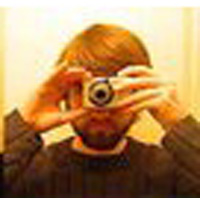




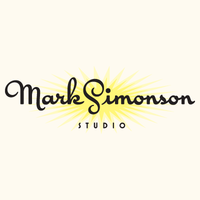




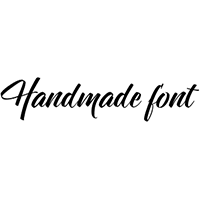


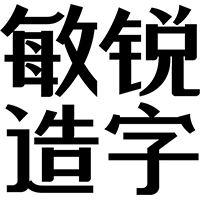
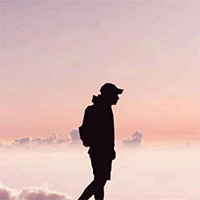

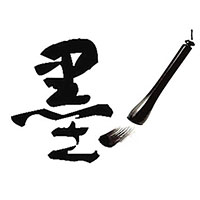





 闽公网安备35010202000240号
闽公网安备35010202000240号